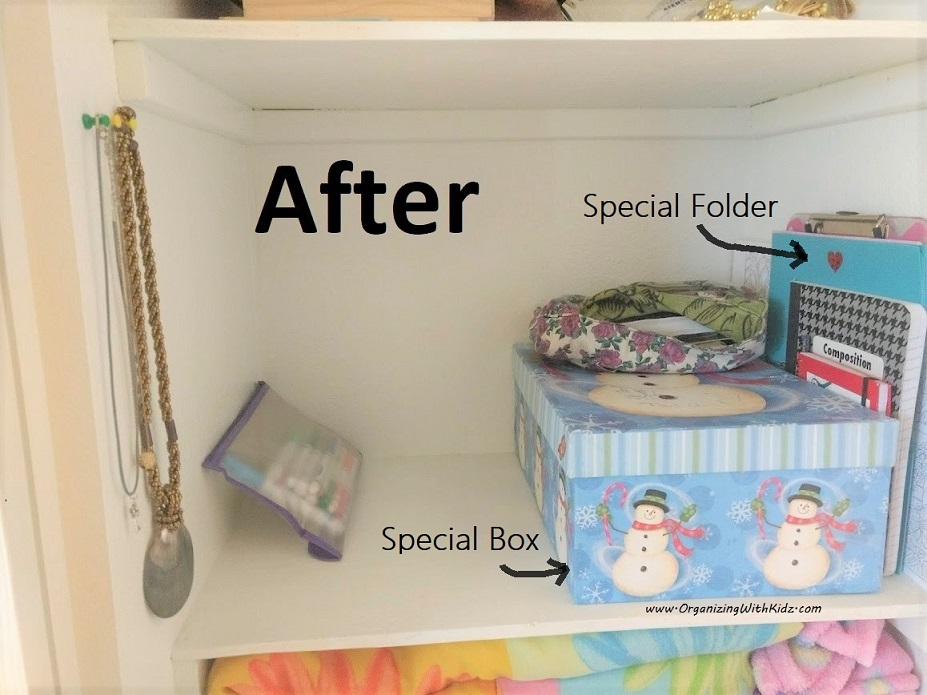Quick Initial Sort:
Go through your kid’s school papers as soon as they get home. While they’re eating a snack, I look through my kid’s papers and ask if they want to keep any of them. Anything they don’t want goes right in the recycled bin. Anything they want to keep must be put in their Special Papers folder.

Special Papers Folder:
Give kids a folder to keep their special papers in. It needs to be a two-pocket folder or something similar, not a binder. Binders hold too many papers and the task of going through them and editing becomes overwhelming for you and your child. Any schoolwork or art that your child wants to keep (that isn’t displayed somewhere) must live in this folder. I have my kids keep their folders in their rooms because they are the ones in charge of it.
Set Expectations for School Papers:
Any school papers they say they want to keep, but don’t actually put in their folder go in the recycling. (Obviously, you would explain the expectations and what will happen if papers are found out of place ahead of time.) The child must show that they actually care about the paper by putting it where it belongs. This step will often weed out the papers that are only kind of important to a child.
When the Folder Gets Full:
When the folder is full both you and your child sit down and go through all the kid’s school papers in the folder. Remember, the child decides which ones are their favorite 20 or so papers to keep. You as the parent decide the number of papers that will fit comfortably in the folder and let your child know what the expectations are. If you as a parent want to keep a paper that the child doesn’t, then you must keep the paper with your things.

When my kids were really young I would set out 6 papers and have them pick their three favorites. We would repeat this process over and over until they had edited their papers down to the predetermined number. This teaches them to evaluate their things. Letting the folder be the thing that limits how many papers they can keep, and not you helps put the parent in the position of a helper instead of an enforcer.
**Remember**
When you are talking about organizing, speak positively.
Do say, “Which are your favorite 3 out of these 6?”
Don’t say, “Which 3 do you want to trash?”
They don’t want to trash any of them. It also triggers their loss aversion reflexes. Instead, we want them to focus on what their favorites are. When they edit out the excess, they are better able to use and see their favorites.
Maintenance:
This is a process that they will go through many times with your help. Eventually, they will learn to do it on their own. Whenever the folder is full you sit down with them and edit what they have so that their papers will fit again.
Special Box:
I also like to give kids a special box for 3D items that are just theirs. When the box is full they have to go through and evaluate what to keep and what to discard.
If you’d like to read more about organizing with children check out What To Do with Kid’s Art, 5 Tips to Help Kids Organize Their Things, or “We wants it. We Needs it.”
If you want one-on-one help organizing a space call Colleen at 208.736.3306 for a free consultation. I’d love to help you on your organizational journey. Virtual options are also available.
